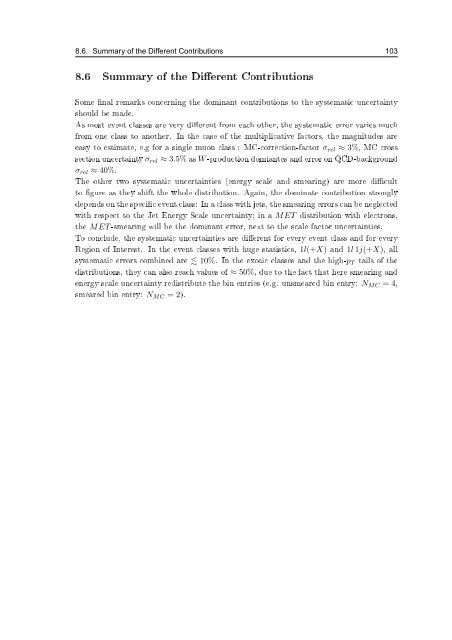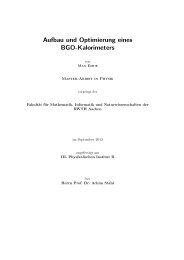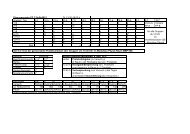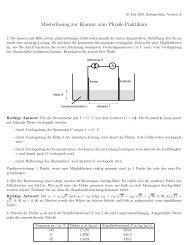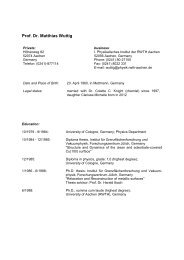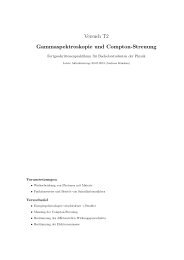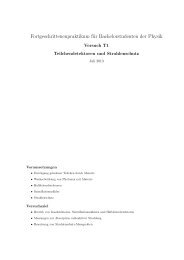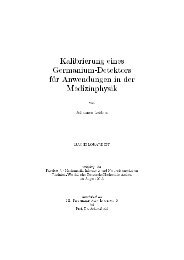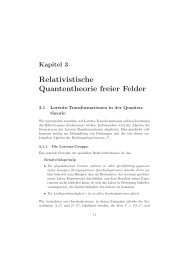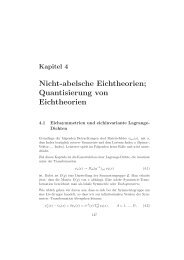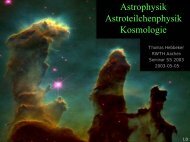Model Independent Search for Deviations from the Standard Model ...
Model Independent Search for Deviations from the Standard Model ...
Model Independent Search for Deviations from the Standard Model ...
Create successful ePaper yourself
Turn your PDF publications into a flip-book with our unique Google optimized e-Paper software.
8.6. Summary of <strong>the</strong> Different Contributions 103<br />
8.6 Summary of <strong>the</strong> Dierent Contributions<br />
Some nal remarks concerning <strong>the</strong> dominant contributions to <strong>the</strong> systematic uncertainty<br />
should be made.<br />
As most event classes are very dierent <strong>from</strong> each o<strong>the</strong>r, <strong>the</strong> systematic error varies much<br />
<strong>from</strong> one class to ano<strong>the</strong>r. In <strong>the</strong> case of <strong>the</strong> multiplicative factors, <strong>the</strong> magnitudes are<br />
easy to estimate, e.g <strong>for</strong> a single muon class : MC-correction-factor σ rel ≈ 3%, MC cross<br />
sectionuncertainty σ rel ≈ 3.5%as W-productiondomiantesanderroronQCD-background<br />
σ rel ≈ 40%.<br />
The o<strong>the</strong>r two systematic uncertainties (energy scale and smearing) are more dicult<br />
to gure as <strong>the</strong>y shift <strong>the</strong> whole distribution. Again, <strong>the</strong> dominate contribution strongly<br />
dependson<strong>the</strong>speciceventclass: Inaclasswithjets,<strong>the</strong>smearingerrorscanbeneglected<br />
with respect to <strong>the</strong> Jet Energy Scale uncertainty; in a MET distribution with electrons,<br />
<strong>the</strong> MET-smearing will be <strong>the</strong> dominant error, next to <strong>the</strong> scale factor uncertainties.<br />
To conclude, <strong>the</strong> systematic uncertainties are dierent <strong>for</strong> every event class and <strong>for</strong> every<br />
Region of Interest. In <strong>the</strong> event classes with huge statistics, 1l(+X) and 1l 1j(+X), all<br />
systematic errors combined are 10%. In <strong>the</strong> exotic classes and <strong>the</strong> high-p T tails of <strong>the</strong><br />
distributions, <strong>the</strong>y can also reach values of ≈ 50%, due to <strong>the</strong> fact that here smearing and<br />
energy scale uncertainty redistribute <strong>the</strong> bin entries (e.g. unsmeared bin entry: N MC = 4,<br />
smeared bin entry: N MC = 2).


